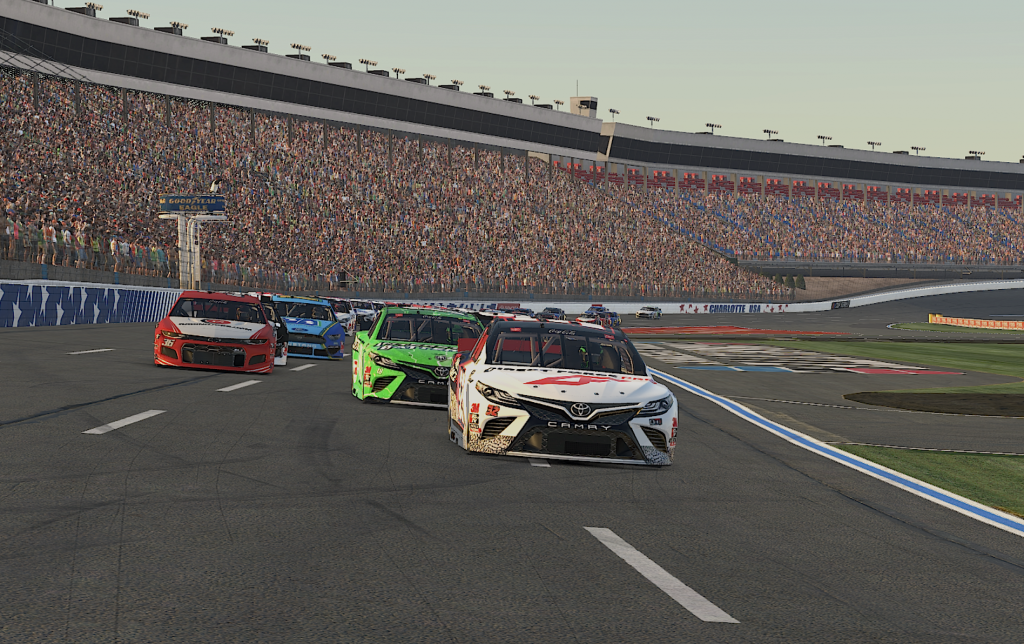Not many racing championships offer $100,000 to the winner, which makes the eNASCAR Coca-Cola iRacing Series one of the most sought-after titles in esports.
The fact that it has attracted squads set up by an American football star, a circuit and real-life NASCAR drivers and teams – as well as established esports operations – backs up the hype behind one of motorsport’s oldest active simracing championships.
The finances involved – like in other esports titles, series, sports and games – has seen the standard rise to a meteoric level, attracting more backing from teams and sponsors, and fiercer competition.
Like real-life NASCAR, the series boasts an end-of-year playoff – a shootout where eight drivers will fight for the title beginning on Tuesday, October 13.
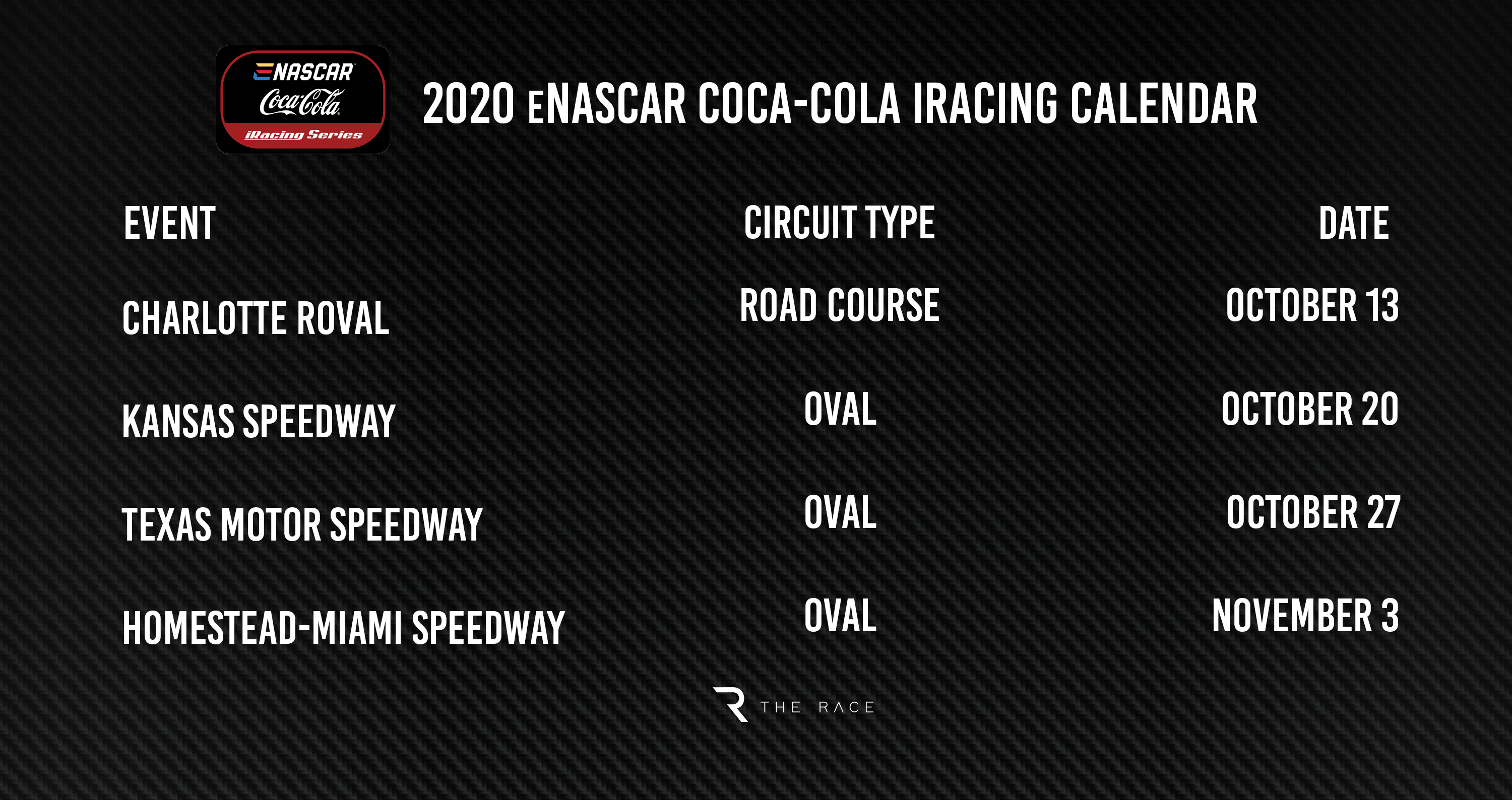
The Race brings you the low-down on the intricacies of the series, its stars, tracks, and who to watch on the route to a $100,000 payout, with help from the series’ stars and a real-life NASCAR race winner.
The championship explained
It’s a bit like NASCAR in real life, but simpler! The eNASCAR Series playoffs have four races, with the top four at the end of the first three races qualifying to fight for the championship in the last race. That means, whatever happens, only four drivers will be able to win the championship at the Homestead-Miami Speedway finale.
At Homestead, if your internet disconnects, you have a crash or technical issue, that’s it, your championship aspirations are over for another year. The only consolation is, if you do make the final four, you’re guaranteed $10,000.
Throughout the 16-race regular season, each victory awards a driver $500 and three bonus points to the score they start the playoffs with. That should encourage drivers to gamble and fight for wins in the regular season, providing an extra incentive.
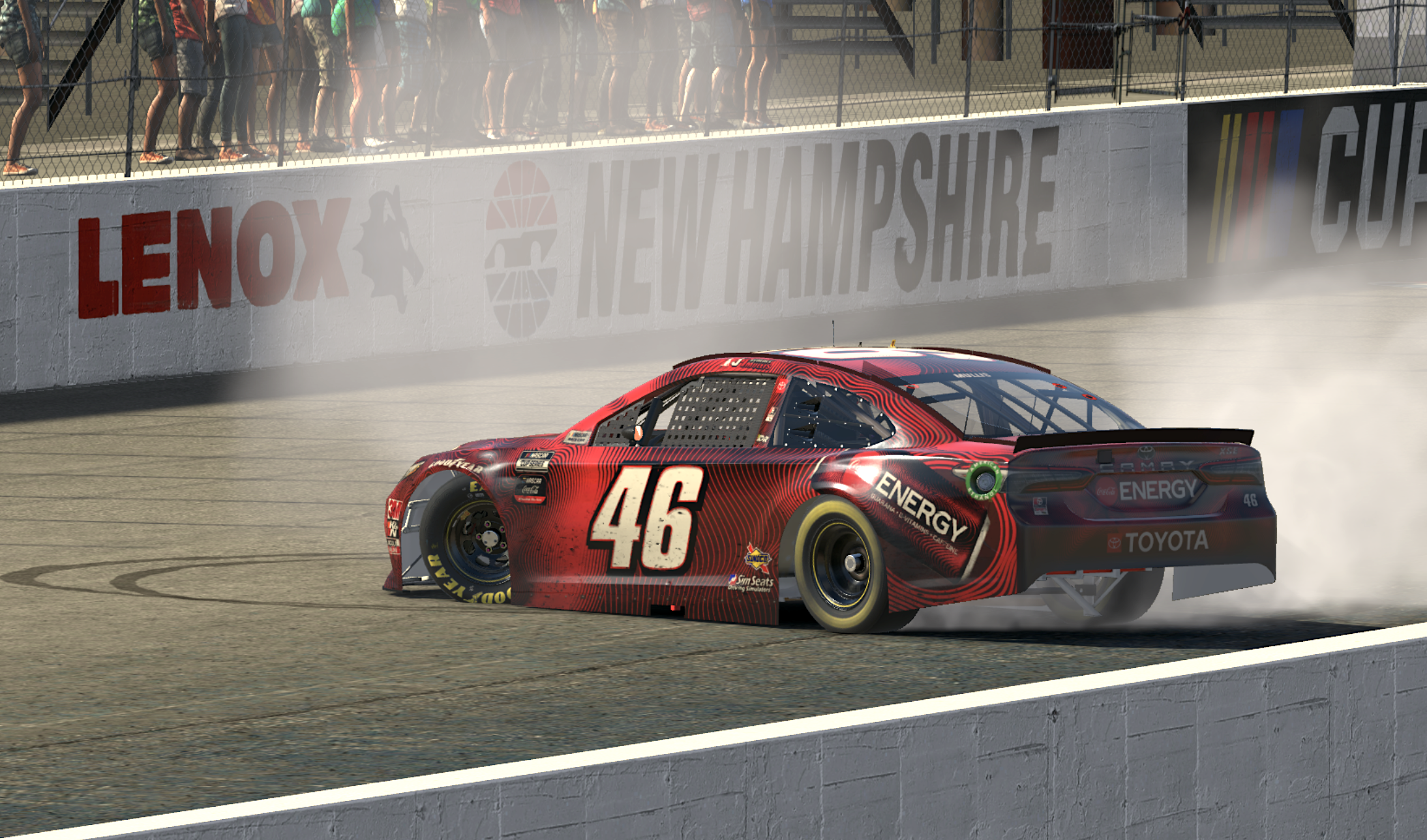
A total of 20 teams and 40 drivers take part with a total prize fund of $300,000 on offer.
The drivers themselves will practice around 20 hours for each race. The eNASCAR Series differs to many others in esports because some drivers still use very basic steering wheel and pedal set-ups. The predominantly oval calendar negates the need for expensive equipment.
This year the playoffs start with a road course, the Charlotte Roval NASCAR competed on last weekend, as the eNASCAR Series loosely follows the real-life schedule.

The series is run through iRacing and set-up development is open, reflecting most changes you can make to your car in real-life. There’s a set tyre limit per round to encourage variation on strategy.
Most drivers work with a group to create set-ups leading up to the race, and then have a crew chief and a spotter. Some people use iRacing’s own spotter and just have a crew chief to keep track of their car, others and what strategy might be best.
The races are usually around half the length of the real-life events, and are available to watch on iRacing’s Youtube channel. They will run each Tuesday for the next four weeks.
Who to watch: The racer and the physics student
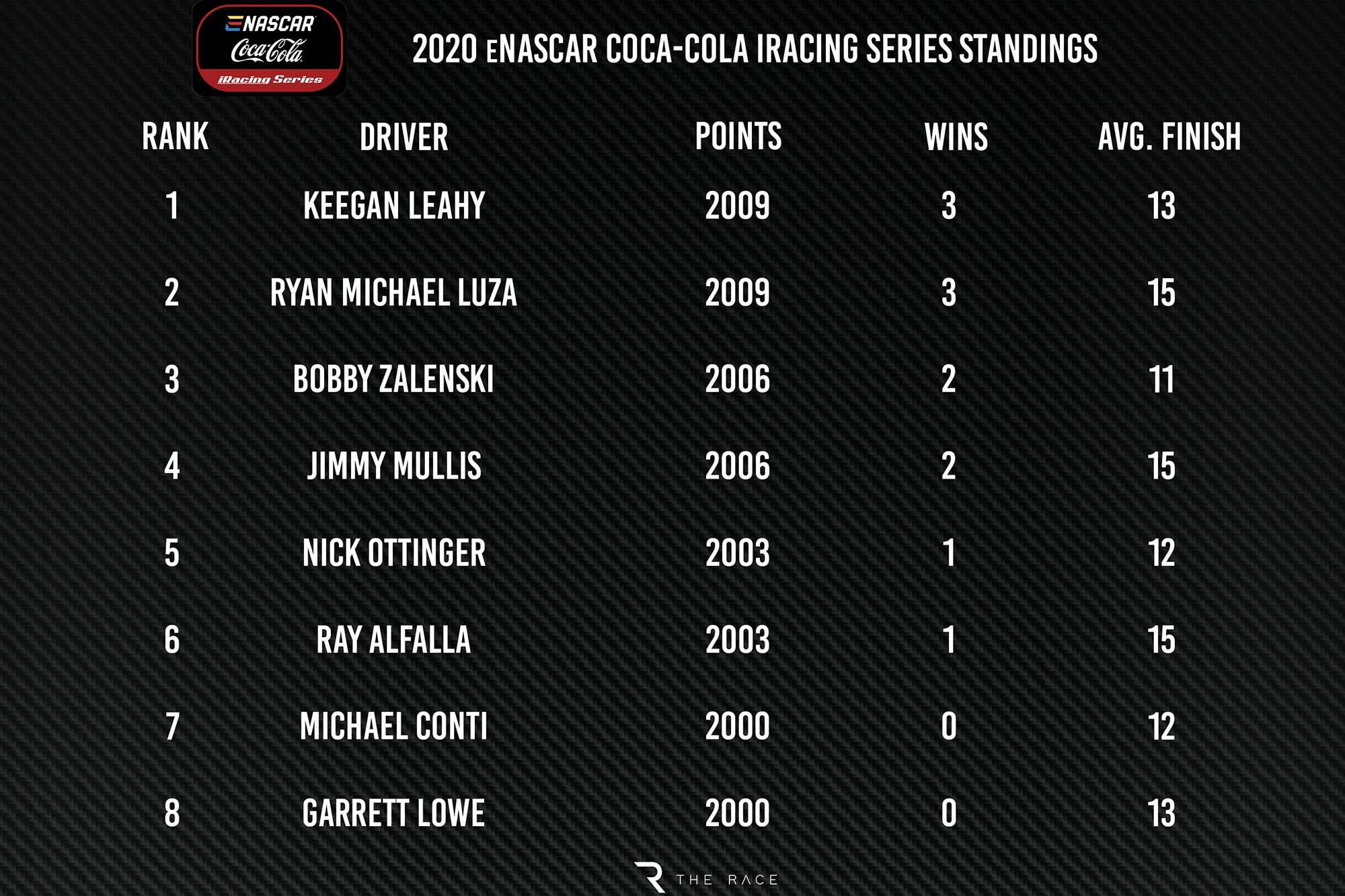
There are two immediate favourites for the 2020 eNASCAR Coca-Cola iRacing Series – three-time winner Keegan Leahy and regular-season champion Bobby Zalenski.
While Zalenski comes from a real-life motorsport foundation, Leahy has a degree in physics and leans more towards the set-up side of things, creating an interesting dynamic between the pair.
Each year the series has a draft that can mix up the teams you race for. That means in the build-up to races, while working on set-up, drivers will often liaise with drivers from other teams as part of a simracing group or just an established bond from previous years. They may work with their current team-mate on track, but unlike in real life will not always do so in the pre-event build up.
Both Zalenski and Leahy have recently gone full-time into competing and working in esports professionally, and both are part of the Virtual Racing School (VRS). It’s a sort of catch-all for those wanting to improve in simracing, with tutorials, equipment and assistance.
Despite the fact that Leahy races for Denny Hamlin’s team and Zalenski for VRS’s official squad, the two work together behind the scenes – along with playoff absentee Chris Shearburn – and the progress they’ve made together shows.
Racing for Hamlin is surreal for Leahy, who’s always been a fan of his, and Leahy has even helped Hamlin prepare for the iRacing NASCAR Pro Invitational races held in lockdown and even some real-life events since joining the team.
Neither Leahy (pushed to victory by Zalenski at Daytona below) or Zalenski have won the series’ title before, and three of the remaining six play-off contenders have, so it’s by no means a two-horse race.
As anyone who has raced on it will know, iRacing has its quirks to going faster and at least one update comes for the NASCAR package each year, meaning the focus of the set-up changes each time, too. Last year, it was all about camber. This year, no one will tell you what it is while the season is going on! However, it’s a bit more straightforward and realistic than in previous seasons.
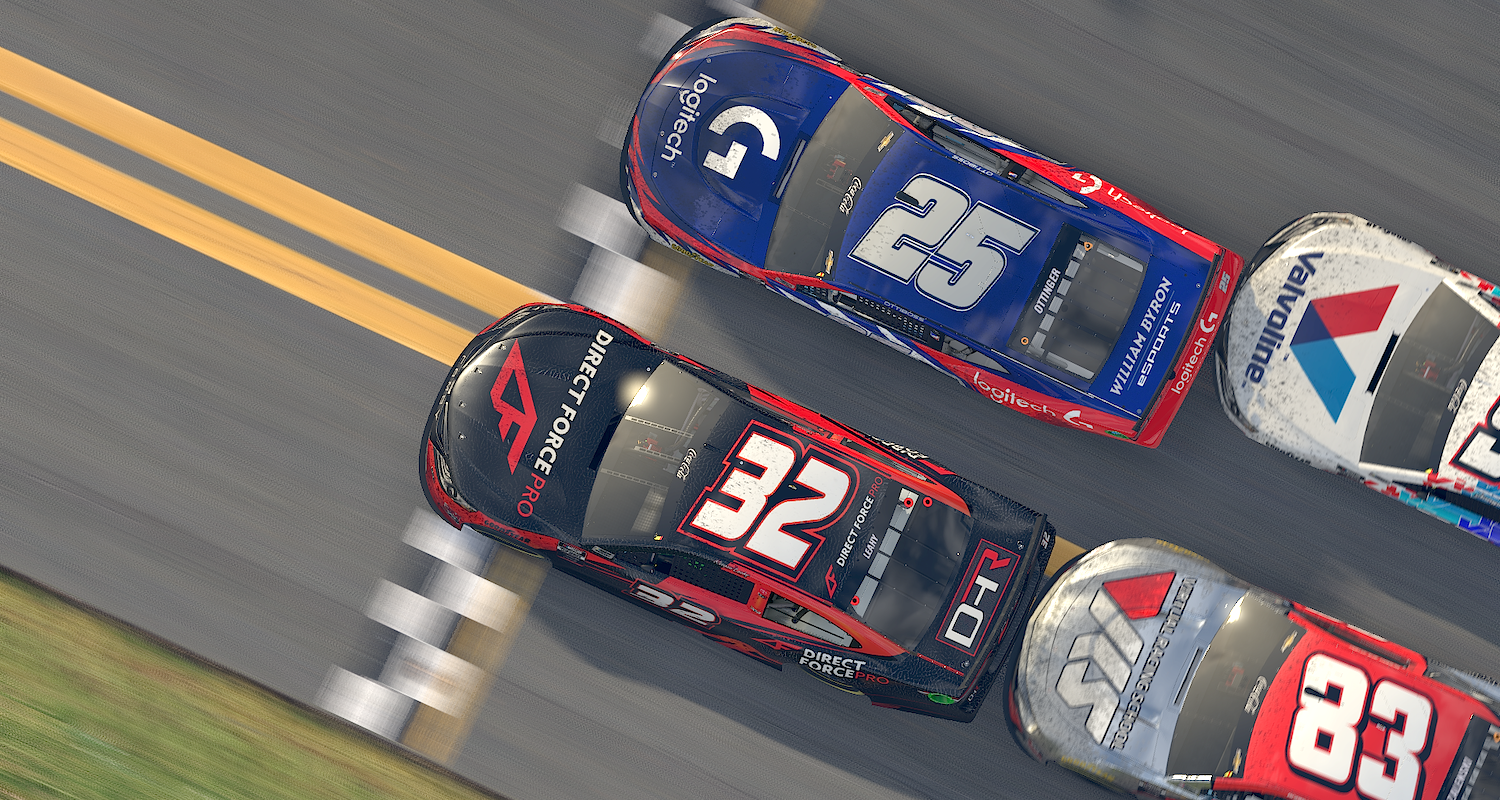
Leahy’s strength lies in the set-up work. His recently-completed degree gives him a fantastic base to work from, which is important when you consider so many esports series are contested with fixed set-ups.
“You have to think of a situation not as a formula, but as a riddle,” Leahy tells The Race. “You can’t look at something the same way every time and expect to get different results and expect to improve, right? So if you want to be an innovator, and be the first to find the fastest way to set up a car, you got to think outside the box and try stuff.”
Zalenski’s secret weapon is that he has won every road course eNASCAR iRacing Series event dating back to 2017! It’s something he’s worked on more and more recently as part of his membership in the VRS Coanda Simsport group, which has led to him competing in the prestigious Porsche Esports Supercup along with superstar simracing team-mates Mack Bakkum, Mitchell DeJong and Joshua Rogers.
Zalenski’s road course wins – five in a row – include the first running of the Daytona race earlier this year, and he’s also won at the Charlotte Roval, which kicks off this season’s playoffs.
Win any of the last three races and you’ve made the championship shootout automatically, so that means Zalenski’s extremely likely to reach Miami in contention.
“People are like ‘oh, man, you’re the favourite’,” Zalenski says. “You learn they’re just words, and people are just having fun or just making observations.
“You know what you’ve got to do. It’s about driving and putting in the work. It’s pretty simple from there. Everything else is stuff you can’t control.”
Who to watch: The outsiders looking in
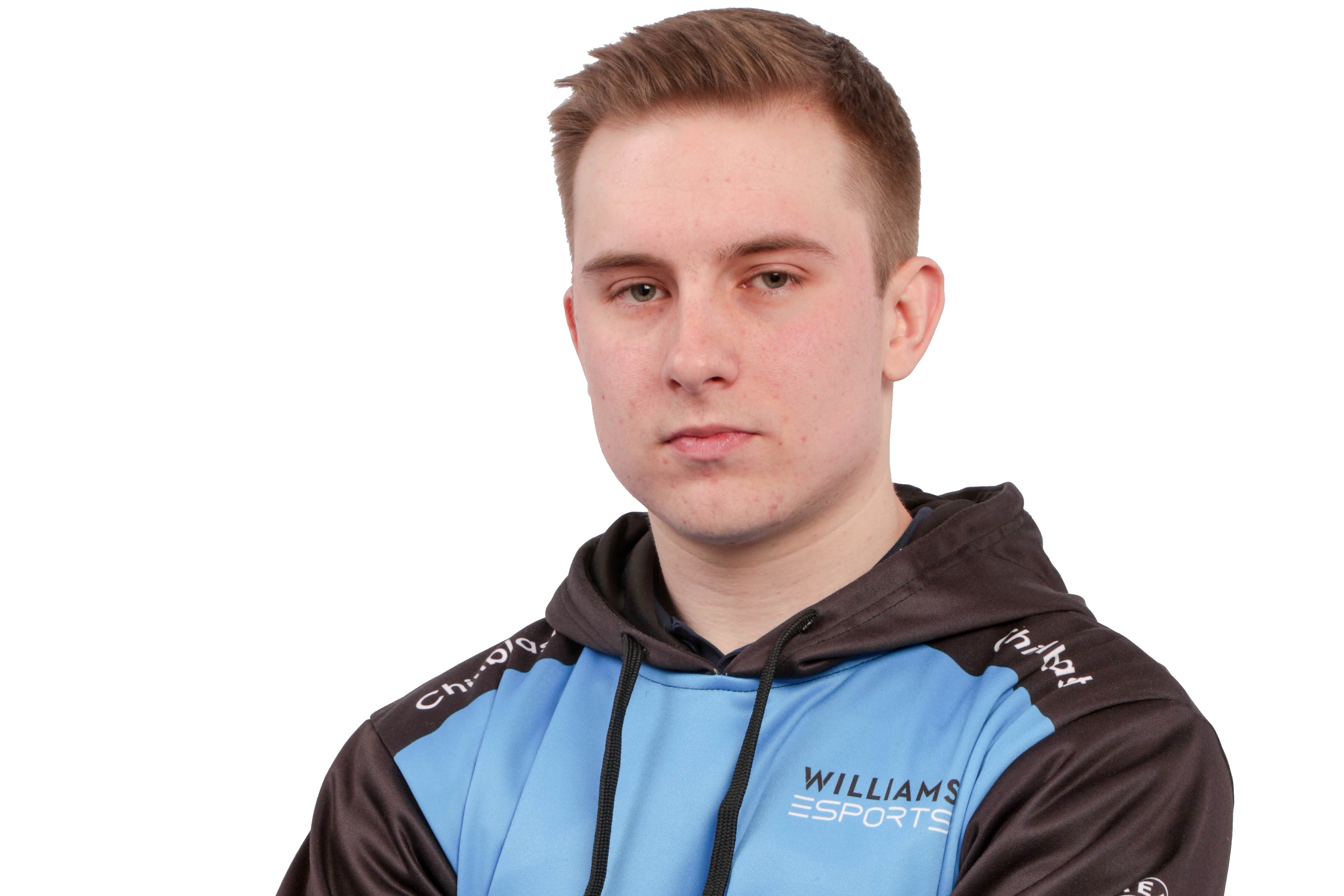
Outside of the top two, Ryan Luza is the one to watch. A very talented real-life short-oval racer who got back into that recently having spent so much time working on his esports craft, he leads Williams’ charge.
The Formula 1 team has taken a unique approach compared to its peers in esports by spreading as far and wide as possible, which creates the peculiarity of seeing a Williams NASCAR team.
Luza took three wins on the bounce earlier this year – an amount only Leahy has also managed, albeit not in a row – but has the worst average starting position of the eight to make the playoffs, so that’ll be the sum of his preparation work. He also isn’t the biggest fan of road courses, so that may derail his campaign.
If he can make it though, he won at Homestead earlier this season, while Zalenski was second and Leahy also made the top five!
Last year’s champion Zack Novak switched teams from Roush Fenway to Richmond Raceway Esports. However, he could only manage 18th in the championship, with no wins proving just how competitive the series is, and how important practice and getting a grip on set-ups is too.
Novak’s team-mate Jimmy Mullis (leading below) made the playoffs however, and took two victories on his way to making the cut. It wasn’t as easy as it sounds though, as he had to scrape his way in.
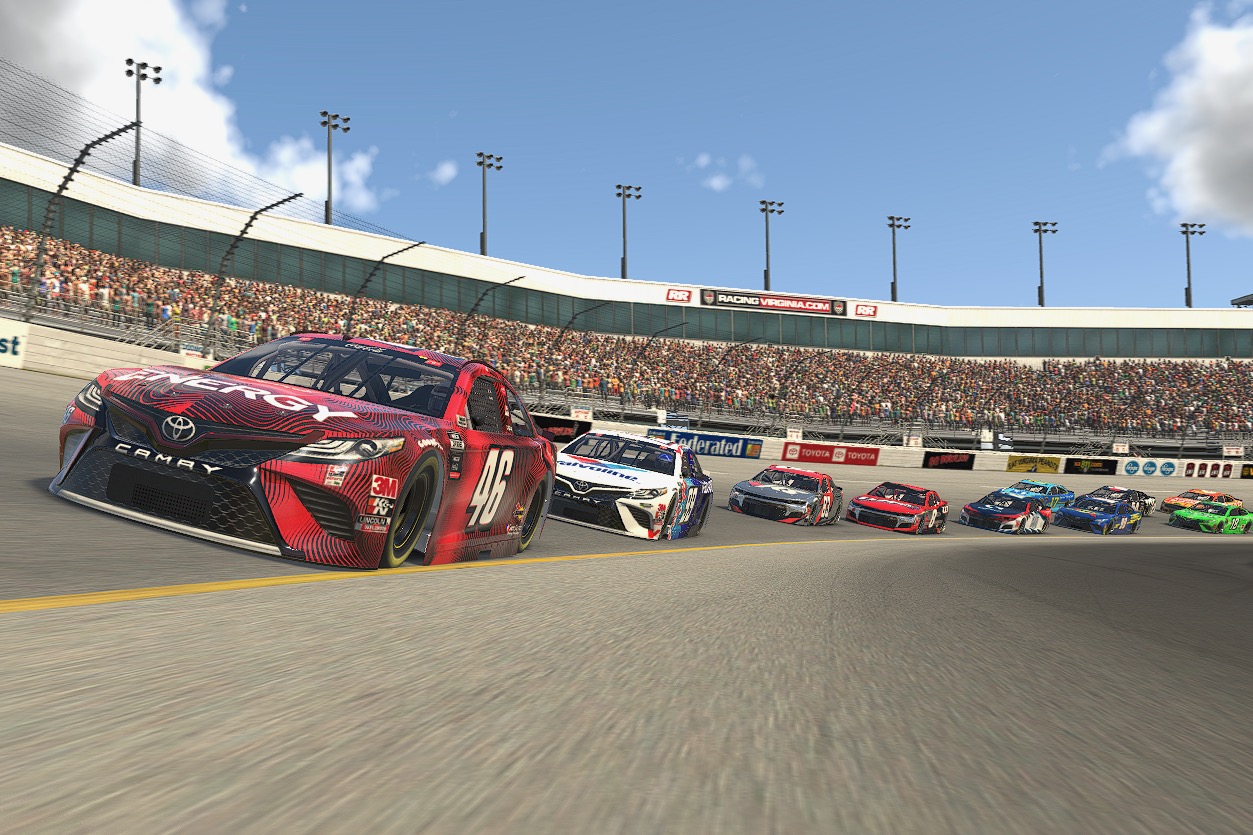
Nick Ottinger and Ray Alfalla both took one victory on route to making the final. Ottinger – racing for the William Byron’s esports squad (see below) – has the second-best average finish of those making it to the playoffs behind Zalenski. Like Zalenski, he’s also a road course ace.
Ray Alfalla – Zalenski’s VRS team-mate – has won the series title four times and is its most successful driver. He can never be ruled out, especially after ending his winless streak dating back to his championship-winning race in 2018 – in May at Atlanta this season.
The final pair making the cut are Michael Conti (JR Motorsports) and Garrett Lowe, neither having won a race this year. Conti won the 2014 title, while Lowe has led just 12 laps but leads the charge for the storied Wood Brothers Racing team.
The real-life gamer-to-racer and eNASCAR team boss’s take
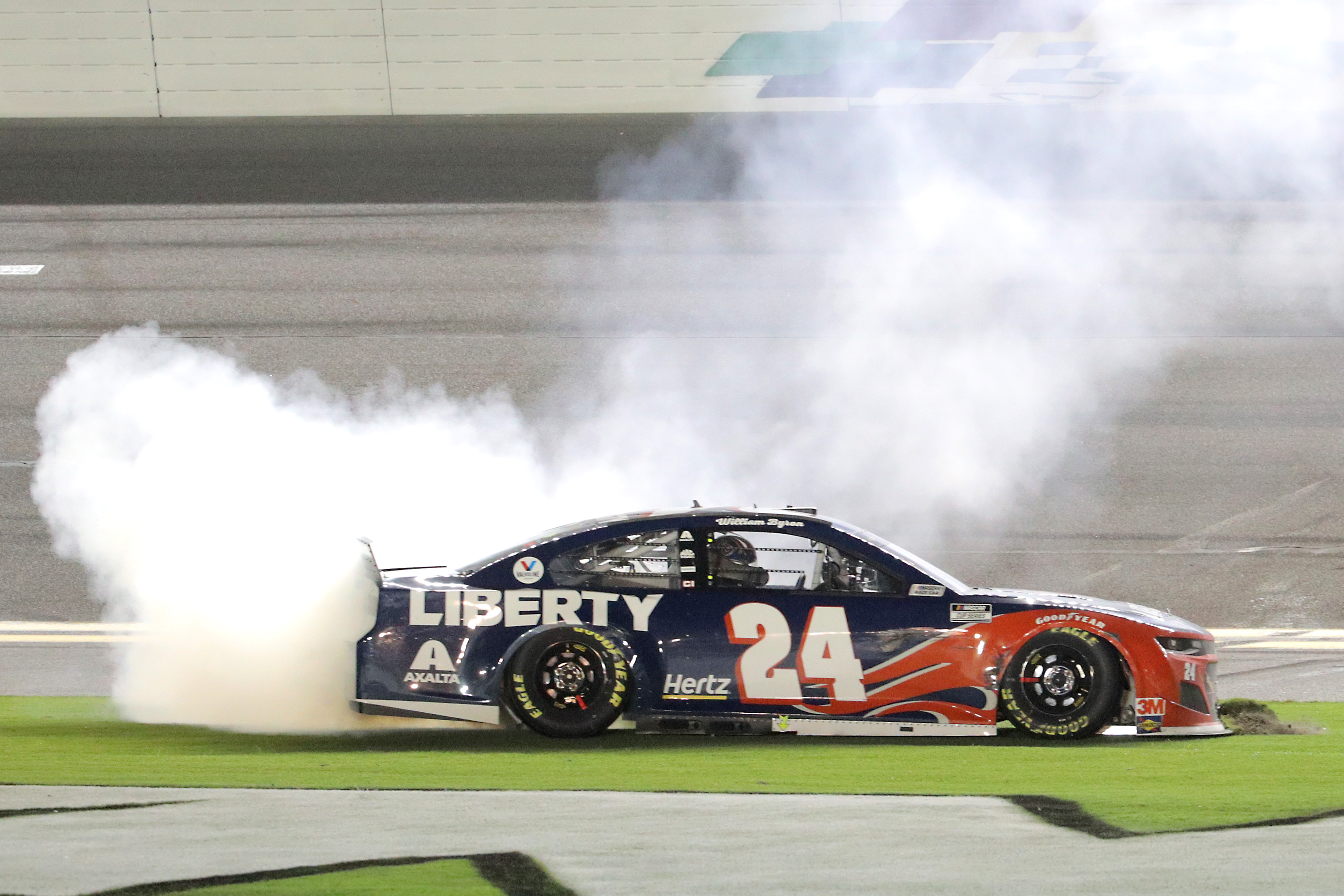
William Byron burst onto the real-life NASCAR Cup Series scene in the most spectacular way.
Having contested just one full year in the third-tier Truck Series and then won the Xfinity Series at his first attempt, a 20-year-old fresh-faced driver from North Carolina was thrown in the pressure cooker. He would replace Jeff Gordon in NASCAR’s most famous car, the #24.
While others before him had used various sim racing platforms – going back to the NASCAR Papyrus days in 2003 – Byron was one of the first of a new breed to use simracing to develop towards a Cup Series seat, rather than just using it to hone skills after having already reached NASCAR’s top tier.
He credits his esports grounding as being “critical for my development” as a driver, and it helped as he dominated the NASCAR Pro Invitational Series run during lockdown when NASCAR’s real-life stars took to an iRacing battle.
Here's the iRacing rig that's helped William Byron win two #ProInvitationalSeries races. pic.twitter.com/SMfLwcC4eo
— FOX: NASCAR (@NASCARONFOX) April 22, 2020
Now Byron is in charge of his own team – something unlikely in real life at the age of 22 – in the eNASCAR iRacing Series.
“The team came about just because of trying to get myself closer to esports in general,” he tells The Race, fielding playoff contender Ottinger and John Gorlinsky.
“I have such an affinity for it and I feel like I wanted to give back to the sport in some way to possibly have some drivers of my own to support and watch every week.”
Not only has the Pro Invitational Series put iRacing at the forefront of the real-world in NASCAR, but a bizarre event in August also added to that.
NASCAR has ditched practice for 2020, first because of the coronavirus implications and then because of calls from drivers, teams and fans that it made for better racing. However, when the Daytona road course was added for the first time, that format was kept and a field of drivers who hadn’t raced there before got their first taste of the action in lap one of the race!

The track was released on iRacing beforehand so it gave iRacing ‘experts’ like Byron a chance to use their additional skills for an advantage.
“I mean, going to a new track for us like that was critical to have it on iRacing to us and we have rFactor as well, with our GM sim,” said Byron.
“That was a big advantage of being able to have that to work with and I felt like it paid off for a lot of guys to be able to use. I was very fortunate that iRacing had that track scanned and ready for us to use to get ready for the race. That was a big deal.”
The lines between real life and the virtual world are as blurred as ever in 2020.
But despite the obsession (a rightful one at that) with the ability to jump from esports to a real race track, it’s fine just to win in the eNASCAR Series too. There’s 100,000 reasons why…


